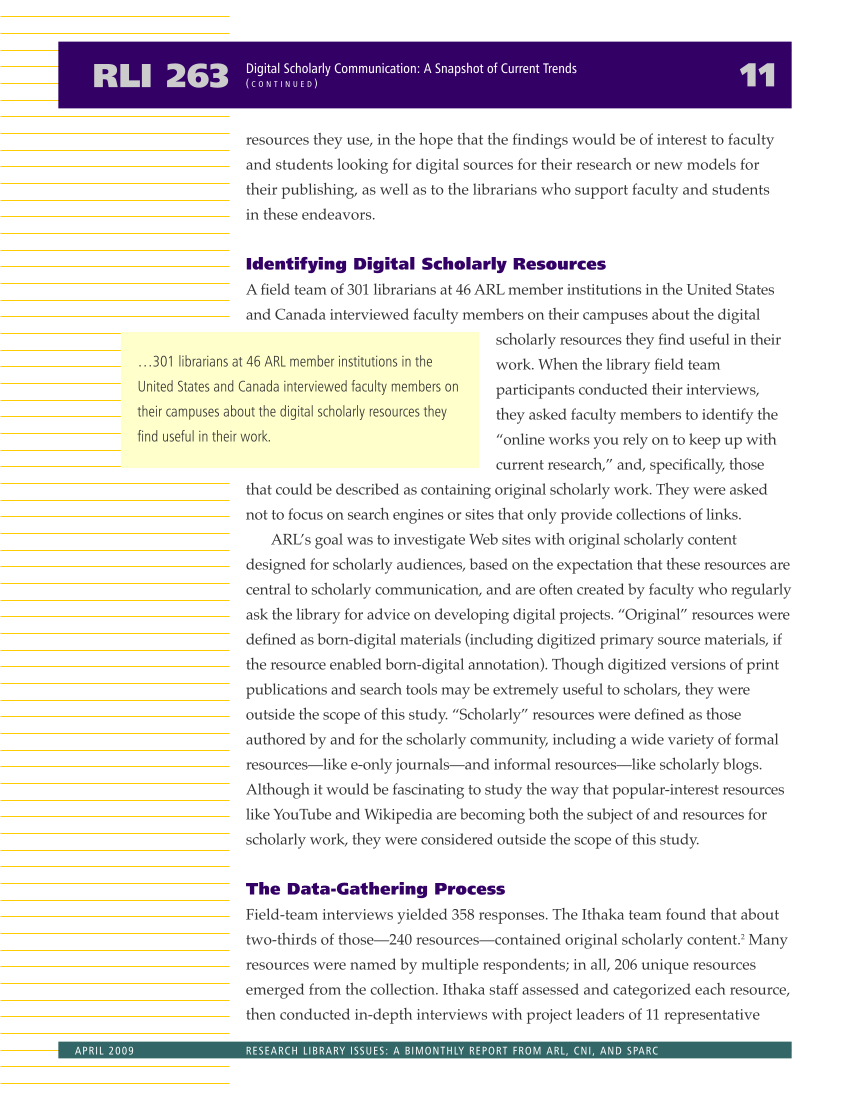resources they use, in the hope that the findings would be of interest to faculty and students looking for digital sources for their research or new models for their publishing, as well as to the librarians who support faculty and students in these endeavors. Identifying Digital Scholarly Resources A field team of 301 librarians at 46 ARL member institutions in the United States and Canada interviewed faculty members on their campuses about the digital scholarly resources they find useful in their work. When the library field team participants conducted their interviews, they asked faculty members to identify the “online works you rely on to keep up with current research,” and, specifically, those that could be described as containing original scholarly work. They were asked not to focus on search engines or sites that only provide collections of links. ARL’s goal was to investigate Web sites with original scholarly content designed for scholarly audiences, based on the expectation that these resources are central to scholarly communication, and are often created by faculty who regularly ask the library for advice on developing digital projects. “Original” resources were defined as born-digital materials (including digitized primary source materials, if the resource enabled born-digital annotation). Though digitized versions of print publications and search tools may be extremely useful to scholars, they were outside the scope of this study. “Scholarly” resources were defined as those authored by and for the scholarly community, including a wide variety of formal resources—like e-only journals—and informal resources—like scholarly blogs. Although it would be fascinating to study the way that popular-interest resources like YouTube and Wikipedia are becoming both the subject of and resources for scholarly work, they were considered outside the scope of this study. The Data-Gathering Process Field-team interviews yielded 358 responses. The Ithaka team found that about two-thirds of those—240 resources—contained original scholarly content.2 Many resources were named by multiple respondents in all, 206 unique resources emerged from the collection. Ithaka staff assessed and categorized each resource, then conducted in-depth interviews with project leaders of 11 representative RLI 263 11 Digital Scholarly Communication: A Snapshot of Current Trends ( C O N T I N U E D ) APRIL 2009 RESEARCH LIBRARY ISSUES: A BIMONTHLY REPORT FROM ARL, CNI, AND SPARC …301 librarians at 46 ARL member institutions in the United States and Canada interviewed faculty members on their campuses about the digital scholarly resources they find useful in their work.











































